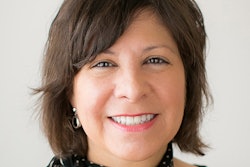
One of the common questions radiologists have concerning their billing is how much they should be paying. What they typically mean when they say this is "What fee should I pay to a billing company?"
This seems like a simple question with a simple answer. However, not understanding the true cost of billing costs many practices significant amounts of money annually.
Basic cost ranges
Let's start off with the simple answer. A hospital-based group (professional component billing only) should be paying somewhere between 5.5% and 10% of collections. Groups that find themselves on the extremes in terms of size (either very large or very small) or have special needs (i.e., accounting, practice management, etc.) will find themselves potentially outside of these norms. If you are operating an imaging center (global billing), you should be paying somewhere around 2% to 5% of collections.
This target range does not vary dramatically regardless of whether you are billing in-house or with a billing company. The cost does vary according to size. It stands to reason that the larger the amount being billed, there should be some discounts due to efficiencies gained through that volume. The more procedures that are billed, the more you can spread out your fixed costs such as computer servers and billing software, thus reducing your billing cost per procedure. Billing companies are able to spread out costs across multiple organizations and gain economies of scale, enabling them to achieve rates similar to self-billers and still have some profit for themselves.
The smaller the radiology group or imaging center, the less likely self-billing is cost-effective or efficient. Billing today is simply too complicated and the costs too high to be effective with a small group of billers and coders.
Determining costs
If you are self-billing, you need to aggregate all of your costs to determine your true cost of billing. Costs typically fall into the following categories:
- Wages and payroll taxes
- Benefits (vacation, bonuses, 401(k), pension, health insurance, etc.)
- Workers' compensation
- Forms and statement printing
- Postage
- Billing software purchase and maintenance
- Computer hardware purchase and maintenance
- Electronic clearinghouse
- Utilities
- Billing-related business insurance
- Supplies
- Education and conferences
- Travel
- Phones and long distance
- Coding service or coding software
- Temporary workers
- Expenses related to compliance and audit
- Allocation of overhead (e.g., practice manager's oversight, allocation of corporate expenses, etc.)
Take the sum of these expenses and divide this by your annual net collections to find out your billing expense percentage.
Staffing
Another huge variable in billing is staffing. Depending on how efficient your billing system is, staffing will vary widely. If you use an older billing system, it is probably going to translate into higher employee costs as fewer processes are automated. The newer billing systems are going to mean you will need fewer people and, by extension, your employee costs (more than likely your second-highest cost after lost revenue) will be lower as well. This is also true for the productivity savings of autocoding software, streamlined clearinghouses, etc.
Automation by itself has advantages over manual processes far beyond simply lowering billing headcount. Some of the advantages are listed below:
- Once you automate something, you don't have to touch it again. It happens without human intervention.
- If you program it correctly, you don't have to worry about human error.
- The computer can work things much faster than a human.
- We can do much more work with fewer people. The only things humans need to be doing are the things that can't be set up to run via a rule and monitoring the robots.
Staffing varies widely as a result of size, use of technology, and management philosophy. We have seen a 25-person radiology group with seven billers on staff (which was an unmitigated disaster) and a four-person radiology group with the same number (that wasn't really doing a whole lot better). A rough rule of thumb is that the billing office should be staffed at 60% of the full-time equivalent (FTE) radiologists. In other words, if you have 10 radiologists, your billers and coders should be six FTEs. Again, depending on a lot of factors, this rule of thumb may vary.
The true cost of billing
Though the above lists the costs that virtually everyone would use to calculate the cost of billing, we do not believe the list to be adequate. Before we explain why, let's explain a very common mistake people make in billing.
In billing terminology, there is a metric called adjusted (or net) collection percentage. Adjusted collection percentage tells you that of the money that is possible to collect, how much is actually being collected. For example, if your adjusted collection percentage is 90%, it means that you are collecting 90¢ for every $1 that is possible to collect. It is the best metric for determining the effectiveness of your billing efforts.
One percentage point of the billing fee is the same as one point of adjusted collection percentage. Repeat -- one point of billing fee is the same as one point of adjusted collection percentage.
The most common mistake radiologists make is to focus on the cost of billing from the list above and ignore adjusted collection percentage. We have seen radiology practices that are 20 percentage points below the national average for adjusted collection percentage worried about a half-point in billing fee. In one case, there was a two-radiologist imaging center that was leaving $750,000 a year (or about 20 percentage points) on the table through bad collections and yet didn't want to change their billing practices because the fee would possibly increase by one point. If I told you for every $1 you gave me, I would give you $19 back, would you do it?
The following is your true cost of billing:
The objective here is simple. You want to collect the greatest amount of money possible for the least possible expense. This is what we mean when we say we want to optimize the true cost of billing. When we do so, we maximize the profit (revenue minus expenses) for our organization.
If this were a rare occurrence, it wouldn't be worth mentioning, but this happens all the time. Bad collections are potentially your biggest cost to the extent that they will dwarf your other expenses. In the above case, the radiologist thought he was paying about 3.5% a year for billing, but was really paying more than 20% a year when you added in the money lost through poor billing practices. It is only when you add in your lost revenue that you come to a true cost of billing.
We recommend that you don't skimp on your billing software, billing company, or billing employees. Coders need to be experienced and preferably certified in radiology. Don't hire a local billing firm that doesn't know anything about radiology. Radiology is among the toughest specialties to bill in medicine; even more so if you do interventional radiology. Experts in interventional coding have found that as many as 60% of all interventional radiology procedures during an audit are coded incorrectly.1 When you don't code correctly, you expose yourself at best to lost revenue or fines and, at worst, loss of licensure or imprisonment.
Wide variations
In working in the radiology billing industry for many years now and performing countless billing analyses on radiology practices, I've found one thing is certain -- the variations of costs are wide. I have seen a single, hospital-based physician paying less than 7% for billing and a large, hospital-based group paying more than 13%. When the true cost of billing is considered, I wouldn't be surprised if some group's costs didn't exceed 50%.
Determining the upside potential of collections
The hardest part of this analysis is determining the potential upside of collections. You can do this via the Radiology Business Management Association (RBMA) accounts receivable surveys, but even then this will not give you a good idea of your practice compared to the payor mix of other groups. This will be very true for hospital-based groups since you don't control the patient.
Physician-owned imaging centers control the patient and can collect at time of service (TOS). Hospital-based groups do not have this luxury, so their payor mix is vital to their collection potential. Hospital-based groups with a high self-pay mix or with a lot of high-deductible health plans (HDHP) will suffer accordingly in their collections. As each practice will have a differing collection potential based on the nature of the payor mix, it is important to compare apples to apples. Whoever does your analysis should be able to put your patient mix in its proper context.
A billing company can provide you with an estimate of the potential upside of collections if provided with an end-of-month report with all pertinent data. We can also provide data on our existing clients with a similar patient mix to show what other people in nearly the exact same circumstances are collecting. It takes the guesswork and speculation out of this vital part of the process.
The bottom line
The bottom line is that your billing company fee or your internal billing costs are possibly just the tip of the iceberg to your collection costs. There are many radiology groups and imaging centers that are literally leaving tens of thousands -- and possibly millions -- of dollars on the table through poor collections and don't even know it.
Kyle Tucker is the founder of Dexios Radiology Billing, an award-winning radiology billing company. Dexios does consulting, insourcing, outsourcing, temporary services, and cloud billing for radiology clients throughout the U.S. Dexios provides basic, free, no-obligation billing analysis to radiologists, including estimates of the true cost of billing. More information is available at dexioscorp.com.
The comments and observations expressed herein do not necessarily reflect the opinions of AuntMinnie.com, nor should they be construed as an endorsement or admonishment of any particular vendor, analyst, industry consultant, or consulting group.
1 Stacie Buck, RadRx.



















